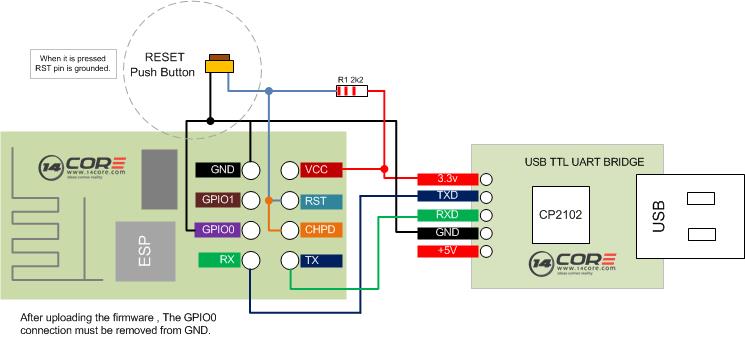
- #Esp8266 firmware recovery gpio 2 serial
- #Esp8266 firmware recovery gpio 2 manual
- #Esp8266 firmware recovery gpio 2 software
- #Esp8266 firmware recovery gpio 2 code
Built-in cache memory will help improve system performance and reduce memory requirements.Īnother situation is when wireless Internet access assume the task of Wi-Fi adapter, you can add it to any microcontroller-based design, the connection is simple, just by SPI / SDIO interface or central processor AHB bridge interface.
#Esp8266 firmware recovery gpio 2 software
Yue Xin intelligent high performance wireless connectivity platform -ESCP SOC, designers bring the Gospel to the mobile platform, itĪt the lowest cost to provide maximum usability for WiFi capabilities embedded in other systems offer unlimited possibilities.ĮSP8266 is a complete and self-contained Wi-Fi network solutions that can carry software applications, or throughĪnother application processor uninstall all Wi-Fi networking capabilities.ĮSP8266 when the device is mounted and as the only application of the application processor, the flash memory can be started directly from an external
#Esp8266 firmware recovery gpio 2 serial
The modules pins only allow 3.3v (use a multi meter to check your serial lines if you are not sure).Have a look at the github wiki Running the module
#Esp8266 firmware recovery gpio 2 code
Have a look at the github wiki Code examples

#Esp8266 firmware recovery gpio 2 manual
Please refer to ESP8266 Technical Reference Manual for more details. The log port and command port pins of the ESP8266 AT firmware can be user-defined to other pins, but with limited options. Modify Log Port Pins ¶īy default, the ESP32-C3 AT firmware provided by Espressif uses the following UART0 pins to output log: ESP32-C3 Technical Reference Manual for the pins you can use. The log port and command port pins of ESP32-C3 AT firmware can be user-defined to other pins. Modify Log Port Pins ¶īy default, the ESP32-S2 AT firmware provided by Espressif uses the following UART0 pins to output log: Refer to ESP32-S2 Technical Reference Manual for the pins you can use. The log port and command port pins of ESP32-S2 AT firmware can be user-defined to other pins. Set uart_cts_pin and uart_rts_pin to be -1 if you do not use the hardware flow control function. Set uart_tx_pin and uart_rx_pin as needed. Open your local factory_param_data.csv file. You can change them directly in your factory_param_data.csv table: build.py menuconfig –> Component config –> Common ESP-related –> UART RX on GPIO#īy default, UART1 is used to send AT commands and receive AT responses, and its pins are defined in Column uart_port, uart_tx_pin, uart_rx_pin, uart_cts_pin, and uart_rts_pin of the factory_param_data.csv. build.py menuconfig –> Component config –> Common ESP-related –> UART TX on GPIO#

build.py menuconfig –> Component config –> Common ESP-related –> UART for console output When compiling your esp-at project, you can modify them to other pins with the menuconfig utitlity: Modify Log Port Pins ¶īy default, the ESP32 AT firmware provided by Espressif uses the following UART0 pins to output log: Refer to ESP32 Technical Reference Manual for the pins you can use. The log port and command port pins of ESP32 AT firmware can be user-defined to other pins. To use other interfaces as the AT command port, please refer to AT through SDIO, AT through SPI, or AT through socket for more details.


 0 kommentar(er)
0 kommentar(er)
